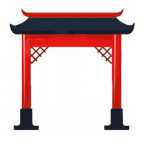| Meaning |

boy, children 童
|
| Explanation |
|
Used in these characters:
|
|
童
|
 |
|
JLPT HSK 4 |
|
| child, children
|
Top: stand 立, below: village 里 (Fields 田 and earth 土 belong to a village)
Standing in the village is: a child.

|
|
|
|
撞
|
 |
|
JLPT HSK 5 |
|
| knock against, ring a bell, meet by accident
|
Left: hand 扌, right: child 童 (= It is standing 立 in the village 里 [= Fields 田 and earth 土 belong to a village])
If a hand hits a child, it can only be a random knocking or bumping.

|
|
|
|
幢
|
 |
|
JLPT HSK 6 |
|
| banner, classifier for buildings
zhuàng, chuáng
巾
童
里
 |
|
Left: cloth 巾, right: child 童 (Standing 立 in the village 里: a child.)
A cloth [as small as] a child is: a banner.

|
|
|
|
憧
|
 |
|
JLPT no HSK |
|
| irresolute, unsettled
|
Left: feelings 忄, right: child 童 (Standing 立 in the village 里: a child.)
The feelings of a child are irresolute and unsettled.

|
|
|
|
瞳
|
 |
|
JLPT no HSK |
|
| pupil of the eye
|
Left: eye 目, right: child, children 童 (Standing 立 in the village 里: a child)
The eye has a 'child': The pupil.

|
|
|
| Radicals are shown here that are similar either in appearance or meaning. |  |
|
At the page you get the memory phrases for learning the Chinese Hanzi. If you are learning the Japanese kanji, please follow this link. |
List of the characters |
List of the radicals
|

